Regardless of the growth method, flushing plants (a.k.a, leaching the soil) is common. One could think that doing so is counterproductive, but instead, it works in favor of the plant.
It allows them to not only use but also dispose of any leftover salt and/or nutrients that may have accumulated within the growing medium.
However, it’s important to learn how to flush plants without overwatering. Otherwise, it may not cause the desired results for you.
Flushing requires excess water, but the amount of water administered can often become too much. As a result, the soil can go soggy and unusable and cause issues such as root rot. The simplest way is to pour slowly, but there’s a bit of a trick to it.
We’ll explain the process in more detail in the article. We will also look at the frequency and much more, so read on for all the details.
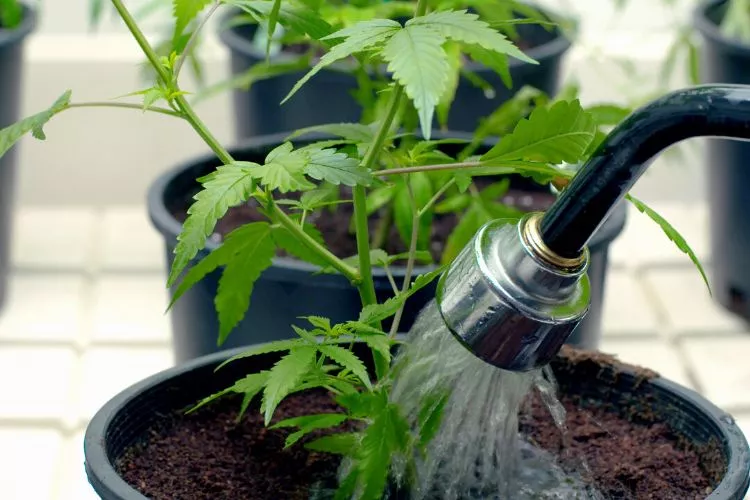
Table of Contents
How much water should I use when flushing plants?
Flushing plants of excess nutrients can assist with avoiding the risk of nutrient lockout. This is where too many nutrients are available and cause a chemical reaction that does not allow the plant any nutrients to be taken in.
By flushing them, you’re diluting the nutrients, so they either become usable or disappear, and new nutrients can be added.
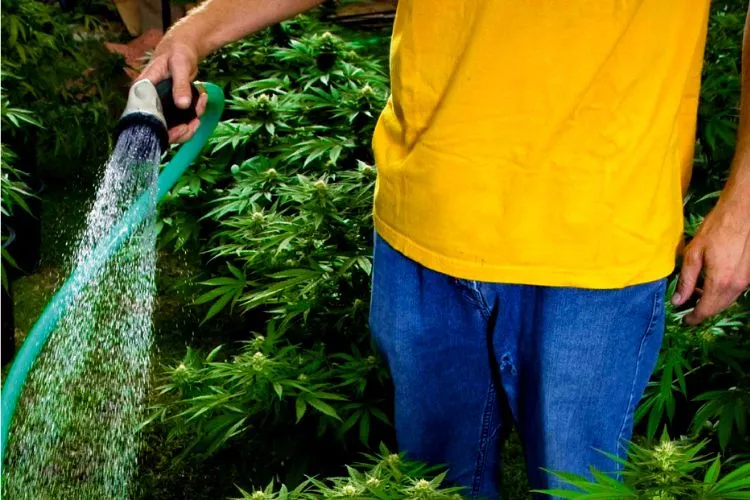
Flushing can also be used if a fungal problem or your plant could be hydrophobic. One of the biggest issues with flushing nutrients is the water that should be used.
There is no universal rule, as all plant species, growing containers, soil conditions, etc., are vastly different.
However, using around 3-5 times the amount of distilled water the growing container can hold is a good starting point. If any more water than that amount is used, the container can become flooded and cause pooling around the roots.
A key factor that can confuse the process is poor draining soil to grow the plant. If this is the case, some adjustments will need to be made to reduce pooling risk.
How to flush plants without overwatering? (step-by-Step Process)
Now that we understand the importance of this process and the amount of water that should be used, let’s look at how to flush plants without overwatering in the simplest way possible.
The key here is patience. Pouring too much water at once will make the job unnecessarily messy and take longer.
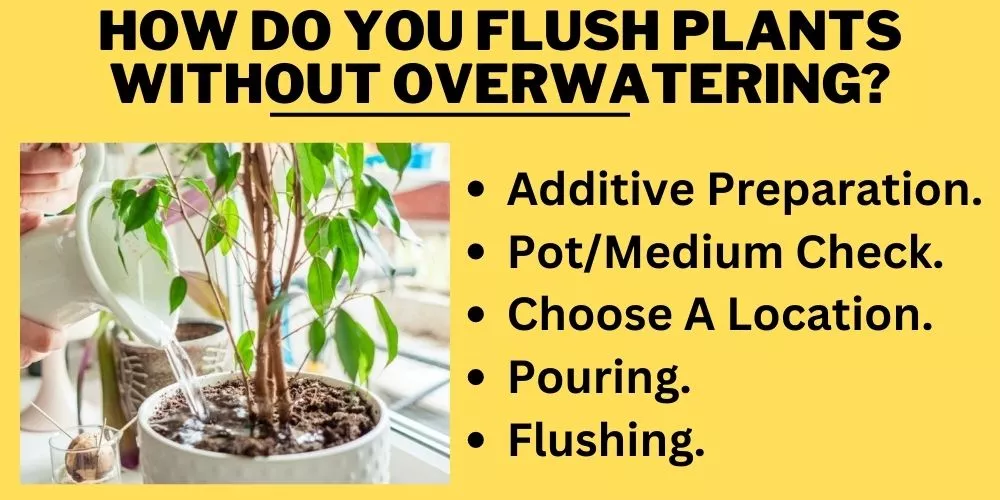
Additive Preparation
There are a few reasons your plant(s) may require flushing. They may have an excess of nutrients; they could be hydrophobic or even subject to some fungal issue.
Before you begin the process, it’s a good idea to consider if any additives are needed to administer to your plant as soon as it has been flushed.
Preparing them before you begin so they are ready to go upon completion reduces any late-minute scrambles or forgetfulness. Nutrient flushing may require replacement nutrients.
Hydrophobic plants may require a replacement wetting agent. Fungal-affected plants may require a fungicide ready to go.
Pot/Medium Check
Another thing to assess is if any blockages occur. These issues can restrict drainage, which can cause the flushing to be ineffective.
Try to think of the type of medium that has been used. If it’s something that doesn’t suit the plant or is visibly blocking, it might be worth removing the plant, repotting and not going through with the flush altogether.
On the other hand, the medium may need a bit of manual moving to aerate just that little bit to continue with the flush. Check out all drainage holes and ensure they are not obstructed with any compacted medium or debris.
Choose A Location
When the flushing process is in motion, it will get messy. Not only will you have a mass of water to deal with, but the loose soil, toxins, salts, minerals, and other debris that comes with it can go everywhere.
So, it’s a good idea to go through this process somewhere that can be easy to work and clean up.
A bathtub is the best place as they are often larger, and easier to maneuver bigger plants. A sink or shower are other great alternatives.
Of course, you could do it outside or use a removable drip tray if you’re worried about any nasties getting into the drainage system. Drip trays can easily be emptied onto outdoor plants.
The Process (Pouring)
Once all preparations are complete, it’s time to start pouring on some water. A watering can, or soft head hose attachment works best. Try to use clean, room temperature, distilled water if possible.
Pour the water slowly and let the growing medium decide how fast or slow you want to continue.
It could be a little more compact and take longer than expected. Take your time and continue to pour until you have used 3-5 times the amount of water as the total volume of the growing container.
Depending on the size, you may need to use around 1 gallon (3.8 l) of water for each 1-quart (0.95 l) plant container.
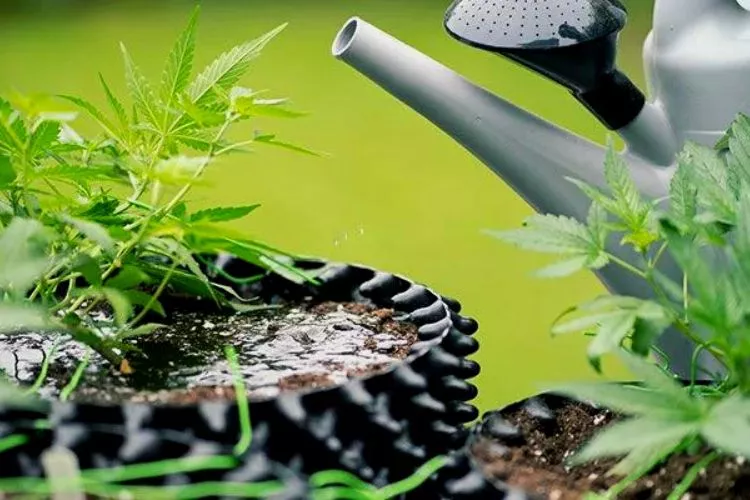
The Process (Flushing)
Once you have poured on the water, the next step is to wait for the water to completely flush and drain out of the growing container. This waiting phase may take 2-3 hours depending on the size of the pot, its soil conditions and/or the amount of water used.
Once the water has finished dripping out of the drainage holes, the process is complete. That’s as simple as it gets.
Does Flushing Make a difference?
Flushing makes a difference as it assists with the burnability of the plant. It slowly leaches out any excess salts and/or nutrients that can cause the nutrient lock.
The only real issue that could arise is the potential adjustment of the pH of the soil whilst going through the process.
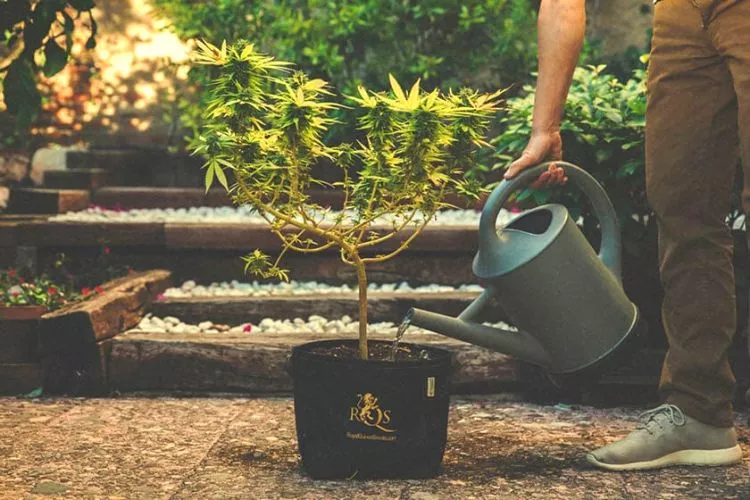
However, this can be easily corrected once the flush is complete by using some simple readjustment products. Flushing effectively breaks up the chemical relationship between the plant and the nutrients.
It ultimately makes the plant take in any leftover nutrients and use them.
The nitrogen is forced into the flower or fruiting areas, allowing the plant to focus its energy on them before depleting. Once all nutrients are gone, there is none left for the plant to consume. Therefore a total restart of nutrients can begin.
How often do you water during flush?
No universal frequency should be used when flushing a plant as all plant species, soil characteristics, growing containers, etc., are different. The best way to flush a plant and note its water frequency is by simply pouring and waiting. That’s it, that’s the secret.
Pour on some water and allow it to fill the pot, and slowly drain down. Then add some more once you notice that the water is draining adequately.
The soil could have exceptional drainage, which soaks in and drains the water away super fast, or a heavily compacted soil could slow down the process.
Frequently Asked Questions (FAQs)
Should I flush my plants every day?
Depending on what you’re growing and how you’re growing it, the frequency of flushing your plants will differ greatly. However, there isn’t any reason to flush plants every day unless they have accidentally received too many nutrients. Every 3-4 days is generally a good time to complete a system flush. Potted plants usually only need flushing once a month or even half yearly.
How often should you flush potted plants?
Depending on how often the plants are fertilized, they can be flushed once a month. If fertilization isn’t common, flushing once every 6 months is adequate for a potted plant. It’s generally best to flush before fertilization instead of after. This will help remove old nutrients in preparation for fresh, fresh plant food.
Should I flush my plants every week?
There is no universal flush frequency of any plant. The flushing frequency depends on many factors, including plant species and size, soil characteristics, container type, temperature, etc. If the plants are located outdoors, they can generally receive good flushing via rainfall. Flushing every week would be based on personal preference. It doesn’t hurt to do so; if anything, it will freshen up nutrients for the plant to consume.
Should I pH water when flushing?
It’s always best to flush first without adding any pH adjusters. Then add your nutrients and follow up by testing the medium. Once the pH tests are complete, adjust using pH up or down accordingly. Adding pH whilst flushing may confuse any future readings.
Conclusion
Some irritating characteristics can easily hinder flushing plants without over-watering. Adjusting these issues before a flush is essential to the process itself.
Following the steps in this article will ensure that you don’t make the same mistakes as many others who have had issues presented to them whilst doing so. We hope that this article has been helpful, and as always, happy growing!


